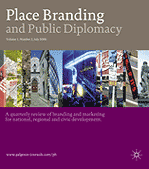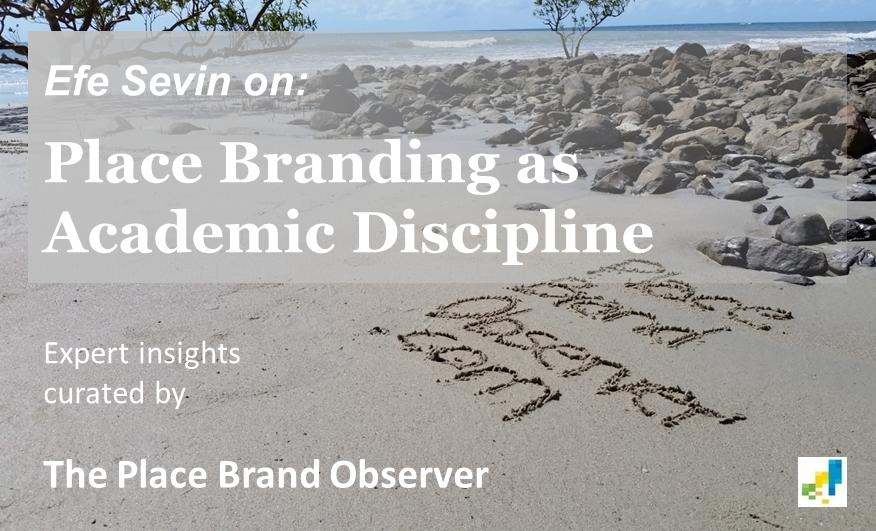Place branding is an “interdisciplinary” field. I am pretty sure you all have seen or read this in a place branding publication. I indeed love the phrase and should admit that I have used it extensively in my writings about place branding.
Yet, nowadays, I find myself questioning the utility of this argument. What does interdisciplinary really mean? What is a discipline and why do we need more than one of that thing to discuss place branding?
What is a discipline?
In academia, discipline refers to an area of study. Beyond its basic meaning, it also works in disciplining scholars into existing structures. Let me unpack this claim. When an area of study establishes (semi-)original theories and methods, it gains the right to call itself a discipline. Up until that point, the area is studied by other disciplines.
For instance, international relations was initially studied by law scholars. Hugo Grotius’s 17th century book entitled On the Law of War and Peace is widely regarded as one of the earliest books in international relations – and international law. Later, philosophers and political scientists started paying attention to the subject.
The increasing volume of studies slowly – as in over three centuries – led to the establishment of international relations as a separate discipline. Aberystwyth University established the first chair position in international relations in 1919. Currently, it is possible to find international relations departments at any given university.
Which brings me to my point about disciplinarity – it is an academic development issue! Continuing with the earlier example of international relations, the definition of the field on the almighty Wikipedia practically summarizes the issue:
International relations[…], depending on academic institution, is either a field of political science, an interdisciplinary academic field similar to global studies, or an entirely independent academic discipline.
Depending on the institution, the same field might be its own discipline or stay interdisciplinary. Being a discipline, within the contours of academia, practically refers to being a department. Is your area of study ‘sophisticated’ enough to deserve its own 4-year undergraduate degree program? Should the universities hire scholars specifically working on your area?
(As a side note, if you are interested in how academic disciplines are born, Andrew Abbott maps the birth of several disciplines in Chaos of Disciplines and proposes an amazing theoretical framework to discuss the issue).
Is place branding a discipline?
Place branding itself is such a young field. We can literally point to Simon Anholt’s 1998 article as the first one to start the discussions on place branding (through nation branding). Unsurprisingly, there are no place branding undergraduate programs (please do correct me if I am wrong), only a couple of graduate degrees and minor programs. In other words:
Place branding is not yet seen as important enough by academia to deserve its own programs or scholars.
I did a short “meta” literature analysis to see the most prolific authors in the field of place branding. I took one step further and looked at the departments of these scholars. The majority of the scholars were placed in marketing departments or business schools. Additionally, there were scholars from urban studies, geography, public administration, and communication (well, it was only me from communication).
 Most of the publications linked to place branding appear in two journals: Journal of Place Management and Development and Place Branding and Public Diplomacy. The former connects place branding with management and development issues, and the latter with political communication and soft power. These two flagship journals are also ‘interdisciplinary’, yet we are not really sure what these disciplines are.
Most of the publications linked to place branding appear in two journals: Journal of Place Management and Development and Place Branding and Public Diplomacy. The former connects place branding with management and development issues, and the latter with political communication and soft power. These two flagship journals are also ‘interdisciplinary’, yet we are not really sure what these disciplines are.
Obviously we need more than just place branding (or communication, marketing, etc.) to have a journal. The answer to what we need – the perfect combination of disciplines for place branding – is unclear.
What does this mean for the study of place branding?
I see two outcomes of interdisciplinarity for place branding. First, scholars need to have ties to established disciplines because of professional concerns, such as getting a job or finding additional outlets for publication.
Second, the study is going to be influenced by the home disciplines. In my research, I tend to conceptualize place branding as a strategic communication attempt, whereas others see it as a spatial planning issue or a marketing problem.
As long as professional obligations force scholars to ‘choose’ non-place branding homes, I guess it will not be easy to synthesize these approaches, and scholars cannot have place branding homes without establishing it as a discipline. We need to find a way – probably a fractal way as argued by Abbott – to break this vicious cycle.
What does this mean for the practice of place branding?
Diversity in approaches! In fact, the interdisciplinarity is better for practitioners than scholars. The fact that academic knowledge is not produced within one discipline, in other words the ways of creating knowledge is not dictated by one single discipline, the scholarly output is richer! It might require a basic familiarity with a few disciplines – or scholars might be more difficult to locate, however, the end result is quite rewarding. I would even argue that the interdisciplinary nature makes place branding studies more practitioner-friendly.
So what?
Indeed, so what? Why should we/you care about the disciplinary issues in place branding:
- If you are a scholar interested in place branding, do not forget that other approaches – those that are very different from your own discipline’s – exist in place branding. Sometimes, we need to leave our flagship journals and look for new studies or publication opportunities in geography, or urban studies journals.
- If you are a practitioner interested in partnering with scholars and/or reading academic work on the issue, do not be limited to marketing journals and business schools. Try communication schools or public administration scholars!
In my next post as Academic Observer, I will discuss how we get to train the next generation of practitioners and how place branding is taught on different campuses.
 About the author
About the author
Efe Sevin is a faculty member at the Department of Public Relations and Information of Kadir Has University, Istanbul, Turkey. His current research focuses on the role of public diplomacy and nation branding on achieving foreign policy objectives. In his role as Academic Observer, Efe shares his thoughts on place branding as academic discipline.


